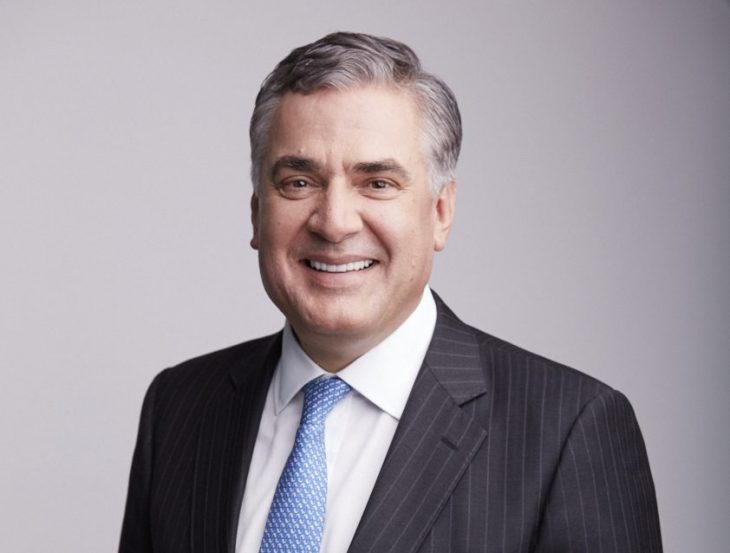
There’s pain now, but “simplicity dividend” will pay off for Rogers, CEO promises
TORONTO – This summer, Rogers Communications was the first to take the leap into lower wireless prices and modern device financing plans, each with the goal of making things easier and cheaper for both the company and its customers.
The new plans, starting at $75/month for unlimited data (albeit slowed after 10GB) sent the wireless market (and the Regulator) into a bit of a tizzy in the summer as all of the other operators were forced to react with new pricing and other competitive offers to keep pace. However, when the biggest wireless company in the country reprices its offerings like this, thereby getting customers to think about their wireless plan and usage and perhaps changing things up, this is a time for competitors to step up their games and get people to switch companies, not just plans.
Of course, they did. In its primary Ontario market, both Freedom and Bell stepped up promotional activity. As well, where Rogers was pushing new device financing plans to try and wean itself and customers from expensive smartphone subsidies (last year Rogers said it spent $2.4 billion on smartphones, subsidizing them with customers to the tune of 40%, or more than $950 million), Bell went the other way with some promotional offers in the market in the summer, offering lower cost, subsidized devices to win customers away
Rogers CEO Joe Natale readily admits now he and his team were surprised how many customers so quickly moved to its new Infinite plans – a million already – when they expected a third of that number. All of which meant a precipitous drop in overage charge revenue ($50 million in Q3).
The company’s third quarter numbers, reported here, reflected the market upheaval spurred by Rogers and the results alarmed Bay Street as RCI’s share price slumped more than 8% on the day Wednesday.
The appetite to switch to unlimited data plans shows, Natale told financial analysts during the company’s third quarter conference call, how hungry Canadians are to use their devices. “The launch of unlimited data is fundamentally changing how Canadians use their wireless services and how operators drive sustainable growth economics into the long term,” he explained. “We made these changes after a thorough and thoughtful analysis on where the industry is going and what matters most to our customers.
“Average data consumption had fallen to one-third the U.S. average – to the bottom quartile of the most advanced global markets in the world. Overall, this dynamic was both unsustainable and limiting to our future with 5G.” – Joe Natale, Rogers
“As you may recall, we led this change for three important reasons. First and foremost, to stimulate data growth. The approach to overage in Canada had seriously decelerated data growth rates. Canadians had become increasingly afraid to use data given the evolution of overage rates in our industry,” Natale explained.
“Average data consumption had fallen to one-third the U.S. average – to the bottom quartile of the most advanced global markets in the world. Overall, this dynamic was both unsustainable and limiting to our future with 5G,” Natale continued.
“Second, to drive a step change in the customer experience and as a direct consequence, reduce the cost to serve our customers. By eliminating bill shock, reducing friction, and in many cases the tension between family members in the data share plan; we collect a simplicity dividend. If you make things clear, simple, and fair; customers will call less, have fewer billing disputes, they will spend less time when they do call, and will be more satisfied overall. Ultimately, this drives their likelihood to recommend Rogers.
So far, Rogers has experienced a 13% drop in overall calls, even though it has introduced both Infinite and Rogers Ignite to the market – moves which would usually increase call volumes. Back in 2017, Natale said Rogers fielded 47 million calls in a year at a cost of about $10 each. A 13% drop in calls based on those metrics would amount to $61 million in annualized savings.
The third reason behind the wireless package updates was “to improve the economics of acquisition and retention. In 10 years, handset costs have escalated from a few hundred dollars to cresting around $2,000 today,” said Natale.
Despite Bay Street’s dismay with the company’s third quarter, Natale wouldn’t waver from the company’s path during the call Wednesday morning, saying Rogers will likely face revenue and ARPU pressure until the second half of 2020, but once the transition is complete, the moves made now will pay off for the company, in a number of ways.
Data overage was and is a constant pain point for customers, so “rather than continue to perpetuate that complexity which drives all kinds of hidden factory costs in our organization. We said no, let’s bite the bullet, let’s get a very simple construct and let’s get to the simplicity dividend as quickly as we can,” said the CEO.
“We saw exactly what happened in the U.S. We sat and watched every chapter of that movie,” he said.
“We saw what was done well… with cost improvements, with a margin that was up 10 points, and a vastly simpler business to manage and navigate – and very different subsidy economics. When you look at that movie – we say ‘why can’t that movie happen in Canada?’ We believe it can, and along the way, we create, happier customers, higher likelihood to recommend and a greater, overall healthy business, that’s sustainable well into the future.
“So we think faster is better as opposed to finding artificial means to prop-up and slow down the effect, including mixing and matching of share plans where some members of the family might be unlimited and others are not unlimited,” which leads to unnecessary complexity and angry families all wondering who ate all the data, often taking it out on their carrier.
“So, we are very much committed to one simple size and approach that fits the entire family. That’s where the real goal is in this. And with that, driving the right equipment financing structure around it, I think is exactly the direction… and the faster the better, frankly.”



